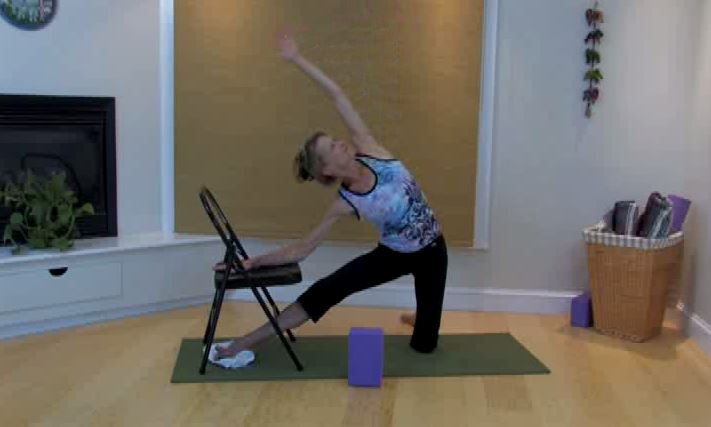January 22, 2012
My class calls this the Chaise Lounge Pose. Fully supported, students relax into it, allowing tension to release. They say that the only thing missing is a drink holder. When to Practice the Pose Supta baddha konasana, or reclined bound angle pose, ranks high on their list for savasana. Mine, too. It’s also my top pick for a mid-day break. For five to ten minutes, I lie in repose with props tucked under my head, torso, legs and arms Benefits of the Pose What’s not to like? Gravity does the work loosening what the Parkinson’s squeezes tight. A restful, passive expansion across the chest opens my heart while flexing the vertebrae behind it. The curve in my lumbar spine relaxes on the bolster and the rubber-band muscles of my inner thighs lengthen without effort. These shifts help my posture, gait and sleep. Yum. There’s also a surprise bonus: Facial muscles […]


